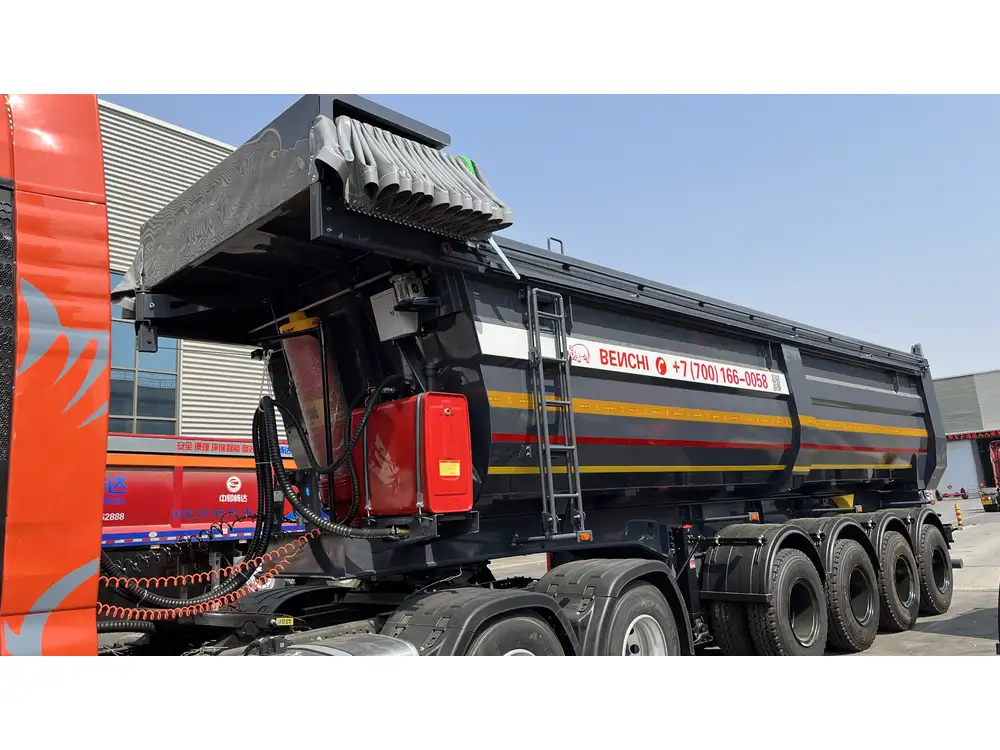Attaching a dolly to a lead semi-trailer is a task that combines technical skill with practical mechanics. It requires an understanding of both the equipment involved and the process to ensure safety and efficiency. This guide breaks down the procedure, highlights common challenges, and offers solutions to enhance your operations.
Understanding the Components of a Dolly and Semi-Trailer
Before we delve into the attachment process, it’s vital to understand the components involved:
| Component | Description |
|---|---|
| Lead Semi-Trailer | The primary trailer which is typically connected to a tractor, designed to carry cargo. |
| Dolly | A small trailer that connects two trailers and consists of a fifth wheel coupling, supporting the weight of a rear trailer. |
| Fifth Wheel | A coupling device located atop the dolly designed to connect with the kingpin of the lead trailer. |
| Kingpin | A vertical pin on the lead semi-trailer that locks into the fifth wheel for secure attachment. |
| Support Legs | The adjustable legs of the dolly that stabilize the unit when not connected to the trailer. |
Step-by-Step Instructions for Attaching a Dolly

Preparation: Safety and Equipment Checks
Before attaching a dolly, ensure all safety protocols are in place:
Inspect the Dolly and Semi-Trailer
- Check for any visible damages or rust.
- Ensure that the fifth wheel is lubricated and operational.
- Verify that the kingpin is free from debris and inspected for wear.
Prepare the Work Area
- Conduct the operation on stable ground.
- Maintain a clean area to prevent accidents.
Safety Gear and Protocols
- Employ proper safety gear, including gloves and steel-toed boots.
- Use cones or barriers to mark the area and keep unauthorized personnel at a distance.
Attaching the Dolly
Align the Dolly with the Lead Semi-Trailer
- Position the dolly directly in front of the lead trailer.
- Ensure that the fifth wheel is aligned with the kingpin of the lead trailer.
Lower the Dolly Support Legs
- Gradually lower the dolly’s support legs until they just touch the ground.
- This provides stability during the attachment process.
Engage the Dolly’s Fifth Wheel
- Reverse the lead trailer into the dolly’s fifth wheel.
- Ensure the kingpin slides smoothly into the fifth wheel opening.
Lock the Connection
- Once the kingpin is engaged, listen for an audible click indicating that the fifth wheel has locked securely.
- Check the locking mechanism to ensure it is properly engaged.
Raise the Dolly Support Legs
- Gradually raise the support legs of the dolly until they are clear of the ground.
- Ensure that the dolly is fully supporting the weight of the lead semi-trailer.
Final Checks
Inspect the Connection
- Verify that the connection is secure and there are no visible gaps between the dolly and the lead trailer.
- Physically shake the assembly to check for any looseness.
Run a Brake Check
- Engage the dolly’s brakes and ensure they are functioning properly before moving the rig.
Perform a Light Check
- Conduct a thorough check of the lights on both the dolly and semi-trailer, ensuring visibility and safety on the road.
Perform a Road Test
- Drive a short distance at low speed to confirm the stability and security of the connection.

Common Challenges and Solutions
Maximum Weight Restrictions
Problem: Exceeding the weight limit can cause damage to the dolly and lead trailer.
Solution: Always refer to the manufacturer’s specifications for maximum towing capacities. Use scales to ensure your load remains within safe limits.
Misalignment of Kingpin
Problem: Misalignment can prevent successful attachment.
Solution: If you encounter resistance when trying to attach, recalibrate the position of the dolly or the lead semi-trailer, ensuring correct angles are achieved.

Inadequate Visibility
Problem: Limited visibility during the attachment process can lead to accidents.
Solution: Use a spotter or rear-view camera systems to aid in properly aligning the dolly and the semi-trailer.
Maintenance Tips for Dolly and Semi-Trailer
Regular maintenance not only prolongs the life of your equipment but also ensures safety on the road. Understanding the specific needs of the dolly and the semi-trailer is crucial:
Scheduled Inspections
| Item | Frequency | Action Taken |
|---|---|---|
| Fifth Wheel | Monthly | Clean and lubricate, inspect for wear |
| Tires | Bi-weekly | Check air pressure, tread depth, and alignment |
| Brake System | Monthly | Inspect components for wear and testing |
| Chassis | Every 6 months | Look for signs of rust, damage, and structural integrity. |

Lubrication Schedule
| Component | Lubrication Frequency | Recommended Lubricant |
|---|---|---|
| Fifth Wheel | Monthly | Heavy-duty grease |
| Kingpin | Monthly | High-temp grease |
| Brake Components | Every 6 months | Brake grease specific to system |
Innovations in Dolly Design
The ongoing evolution of dolly technology is noteworthy. New designs are focusing on weight reduction, enhanced safety features, and improved ease of use. Key innovations include:
- Air Ride Suspension: Provides enhanced stability and comfort while towing, reducing cargo shifting.
- Smart Dolly Systems: Equipped with sensors to monitor load, braking, and connectivity, providing real-time feedback to the operator.
- Lightweight Materials: Advances in engineering allow for the production of stronger yet lighter dolly structures, improving overall fuel efficiency.
Conclusion
The successful attachment of a dolly to a lead semi-trailer involves precise preparation, safety precautions, and an understanding of the inherent mechanics involved. By following the outlined steps, conducting regular maintenance, and embracing innovation, operators can ensure a safer and more efficient transportation of goods.
This comprehensive guide is designed to not only instruct but also to empower manufacturers and operators in their journey toward optimal performance. With the right knowledge and practices, every dolly attachment can become a seamless part of your logistical operations, enhancing safety, efficiency, and performance in the transportation industry.



